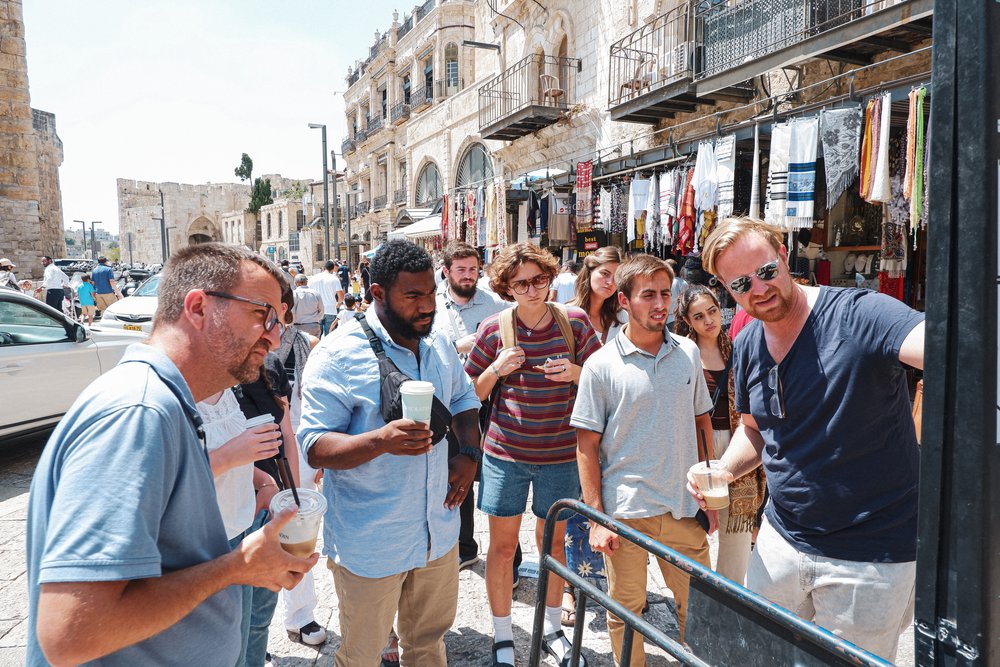
Dr. Daniel Wehrenfennig
I was very grateful to interview an old professor of mine, Dr. Daniel Wehrenfennig. He has a Ph.D. in Political Science and International Relations from the University of California, Irvine, and taught Conflict Analysis and Resolution at UCI. His doctoral work consisted of studying Israeli-Palestine and Northern Ireland comparatively, focusing on citizen involvement in the peace processes. He is also a founder of the Center for International Experience Learning (CIEL), where he traveled over a dozen times to the Middle East, Turkey, Armenia, Georgia, Columbia, and Northern Ireland. With his vast knowledge and connections in peace work, Dr. Wehrenfenning was very helpful in demonstrating potential careers in peace and justice. 

Dr. Daniel Wehrenfennig teaching students in the Middle East through CIEL
I first asked him what advice he would give to a graduate with a Peace Studies degree. He said the student should figure out which of three avenues to follow. One avenue is the more traditional one, working as an official diplomatic in the government, State Department, the UN, or the Peacecorp. Dr. Wehrenfenning says joining Peacecorp can be advantageous if you follow future governmental work, and as you have demonstrated, you can survive and thrive in that environment. Another avenue is working internationally in non-governmental and non-profit programs like the Red Cross. There can be more formalized tracks, such as getting an internship and working your way up. One could also work on refugee crises and women’s rights through this avenue. The last avenue would be national and local work, applying peace studies to issues such as racial equity, homelessness, or mediation. Dr. Wehrenfenning says this could be a non-profit or city government applying peace studies to local problems.
While navigating these different avenues, I asked Dr. Wehrenfenning the pros and cons of working with the government vs a non-profit. A governmental job gives you a more formalized direction with job security, but it will take a few years to work your way up to start working on your interest. However, Dr. Wehrenfenning explains that working with the government may lead to difficulties in finding jobs for non-profits due to critical attitudes. In contrast, non-profit work may be impact-based with more independence, but the pay will be less secure, and there will be fewer benefits.
Next, we discussed how one should navigate getting a Ph.D. or master’s and if there are enough opportunities without one. Dr. Wehrenfenning explained you should get into the workforce and discover what field you want to join, what interests you, and what else you need to learn before earning a master’s. Dr. Wehrenfenning also explained that a Ph.D. may push employers away as they may think you are overqualified, but it is helpful when an organization needs an expert.
Lastly, Dr. Wehrenfenning emphasized resilience is crucial to success in a peace and justice career. To be resilient, you must manage expectations, pay your dues, and understand that getting where you want may take a few years. He emphasized that getting involved, attending events, and networking are crucial to growth in a career in peace and justice.
One takeaway that most surprised me about a career in peace and justice was Dr. Wehrenfenning’s advice to get into the workforce before earning a master’s or Ph.D. I was surprised because I was under the impression that one must go straight from college to grad school, but his advice is crucial to discovering what field interests me and then learning the necessities to help one grow in that career. Another takeaway that surprised me was the importance of self-starting and the helpfulness of networking. Dr. Wehrenfenning emphasized that attending events, shaking heads, and networking are crucial ways to get your foot in the door.
